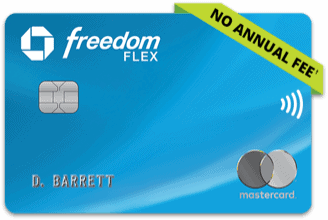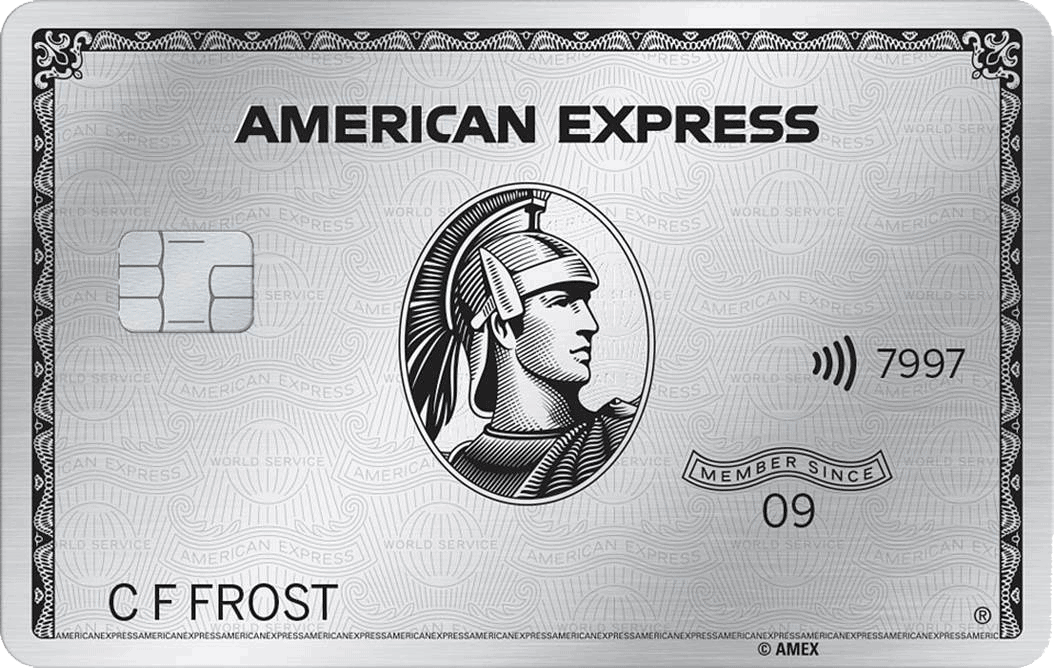MileValue is part of an affiliate sales network and receives compensation for sending traffic to partner sites, such as CreditCards.com. This compensation may impact how and where links appear on this site. This site does not include all financial companies or all available financial offers. Terms apply to American Express benefits and offers. Enrollment may be required for select American Express benefits and offers. Visit americanexpress.com to learn more.
Note: Some of the offers mentioned below may have changed or are no longer be available. You can view current offers here. All values of Membership Rewards are assigned based on the assumption, experience and opinions of the MileValue team and represent an estimate and not an actual value of points. Estimated value is not a fixed value and may not be the typical value enjoyed by card members.
Earning points and miles can seem like an uphill struggle. With so many cards on offer, differing application rules, annual fees, and high interest rates, it’s easy to be scared away.
However, as with any worthwhile endeavor, a solid strategy combined with patience is the key to success, and when it comes to points and miles, it’s no different.
In this article, we’ll guide you through a strategy you can apply to your first year of earning points and miles, so you can avoid the common pitfalls of beginner travel credit card users.
Disclaimer
Before going further, it’s important to make something clear—it’s impossible to make a one-size-fits-all beginner credit card plan. The credit cards best suited to you are dependent on your credit score, monthly expenditure, financial situation and travel goals.
For instance, the credit card strategy of a 20-something undergraduate student will likely be very different to that of a home-owning CEO of a business.
For this reason, it’s necessary to start with some basic assumptions and explain them, before jumping into our guide.

Assumptions: The Average Credit Card Plan for the Average American
While the credit card plan offered here might not work for every American, it can still work for the majority of consumers. By basing our plan on the average American’s spending habits, it’s likely you’ll experience success in following it.
Here are the assumptions we’ve made about our fictional beginner credit card user:
- They have a monthly credit card expenditure of at least $1,861. The average U.S. household has a monthly expenditure of $5,577. Approximately $1,855 of this is spent on housing, meaning that $3,722 is spent on all other purchases, including food and transportation, healthcare, entertainment and miscellaneous purchases. Most of these expenses could be charged on a credit card, but for the purposes of creating a general plan, let’s cut this number in half to give our fictional beginner a monthly credit card expenditure of $1,861.
- They have a “Good” credit score. Typically, you need to have a good credit score to be approved for a travel rewards credit card. We’ll talk more about checking your credit score at the end of this article.
- They haven’t applied for any new credit cards within the last two years.
With these assumptions in mind, here’s our beginner credit card plan for your first year of earning points and miles.
A Beginner’s Credit Card Plan
When it comes to forming a solid credit card strategy, you should keep in mind that timing is crucial. Nowhere is this more true than with the 5/24 rule from Chase.
If you haven’t already heard of it, the 5/24 rule from Chase states that any new card applications will be denied if you’ve opened five or more consumer credit cards with any bank within the last 24 months.
Given that Chase Ultimate Rewards® are some of the most valuable point currencies available, as well as the fact that Chase cards offer some of the most lucrative welcome bonuses, it makes sense to begin with Chase to avoid the implications of the 5/24 rule.
Your First Card: Chase Sapphire
The Chase Sapphire collection consists of two cards:
- Chase Sapphire Preferred® Card
- Chase Sapphire Reserve®
With flexible points, a variety of perks and an excellent return for the annual fees, these are some of the most popular travel reward credit cards on the market today.
Applying for one of these cards is the first step in our beginner credit card strategy.
Keep in mind that Chase allows you to hold only one card from the Sapphire family at any given time. On top of this, you’re eligible for only one welcome bonus on a Sapphire card per 48 months.
Let’s compare the Chase Sapphire Preferred and the Chase Sapphire Reserve cards to see which one is better suited to your goals and financial situation.
Chase Sapphire Preferred® Card
The Chase Sapphire Preferred Card typically offers a welcome bonus between 60,000 and 100,000 bonus points after spending $4,000 within the first three months after having opened your account.
Given that our fictional card user—modeled on the average American’s spending habits—has a monthly credit card expenditure of $1,861, earning that sort of bonus would be a piece of cake.
The Preferred card has an annual fee of $95, with the ability to add authorized users for free.
Here are the perks and earning rates for the Chase Sapphire Preferred Card:
- Points have 25% more value (1.25 cents per point) when redeemed for travel through Chase Travel℠
- Up to $50 in statement credits for hotel stays purchased through Chase Travel℠ every account anniversary
- 5X points on travel booked through Chase Travel℠ (excluding hotel purchases that qualify for the $50 annual hotel credit)
- 2X on other travel purchases
- 3X points on dining, including dining out, eligible delivery and takeout services
- 3X points on online grocery purchases (excluding Walmart, Target and wholesale clubs)
- 3X points on select streaming services
- 1X point on all other purchases
- No foreign transaction fees
- An anniversary bonus of 10% in points equal to your total card expenditure from the previous cardmember year
With a wide variety of bonus spending categories, the Sapphire Preferred credit card gives you a great opportunity to earn Chase Ultimate Rewards.
Ultimate Rewards are some of the most valuable currencies, which can be transferred at a ratio of 1:1 to 11 airline frequent-flyer programs and three hotel loyalty schemes.
Chase’s transfer partners include Air France-KLM Flying Blue, British Airways Executive Club, Emirates Skywards, Southwest Rapid Rewards, United MileagePlus, World of Hyatt and others, giving you maximum redemption flexibility when traveling both domestically and internationally.
If you earn a welcome bonus of 60,000 points, for example, and then redeem these points for travel purchases through the Chase Ultimate Rewards portal, you’ll get a value of $750 in return. Combine this with the $50 statement credit on hotel stays purchased through the Chase Ultimate Rewards portal, and you can easily offset the annual fee of $95 by at least $705 in your first year.
For these reasons, the Chase Sapphire Preferred Card is one of the most well-rounded beginner cards available.
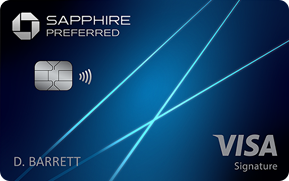
Chase Sapphire Preferred® Card
Earn 75,000 bonus points after you spend $5,000 on purchases in the first 3 months from account opening.
Chase Sapphire Reserve®
The Chase Sapphire Reserve also typically offers welcome bonuses in the range of 60,000 to 100,000 bonus points after spending $4,000 within the first three months since account opening. Just as with the Sapphire Preferred, earning that welcome bonus should be manageable for our beginner credit card user.
The Chase Sapphire Reserve card has a higher annual fee than the Chase Sapphire Preferred, standing at $550 per year and $75 per authorized user.
Here are the perks and earning rates for the Chase Sapphire Reserve:
- Points have 50% more value (1.5 cents per point) when redeemed for travel through Chase Travel℠
- 10X points on hotels and car rentals purchased through Chase Travel℠ (after the first $300 is spent on travel purchases annually)
- 5X points on flights booked through Chase Travel℠ (after the first $300 is spent on travel purchases annually)
- 3X points on other travel purchases (after the first $300 is spent on travel purchases annually)
- 10X points on Chase Dining purchases
- 3X points on other dining at restaurants, including eligible takeout and delivery services, as well as dining out
- 1X point on all other purchases
- $300 annual travel statement credit
- Complimentary Priority Pass Select membership at 1,300+ VIP airport lounges globally
- The card comes with statement credit to help with the cost of Global Entry/TSA PreCheck
- Get access to special benefits when staying with The Luxury Hotel & Resort Collection
- Travel and protection coverage
- 24/7 access to a customer service specialist
- No foreign transaction fees
While the Chase Sapphire Reserve card comes with a hefty annual fee, it can definitely be worth it as long as you make the benefits work for you.
If you spend at least $300 per year on travel, then you’ll offset the annual fee by more than half after the full annual travel statement credit is applied. This comes with an additional $85 to $100 statement credit for Global Entry, TSA PreCheck or Nexus enrollment fees. Not to mention the Priority Pass Select membership at 1,300+ VIP airport lounges worldwide that the Sapphire Reserve® gets you.
Likewise, if you earn and redeem a welcome bonus of 60,000 points, for example, you’ll get a redemption value of 1.5 cent for travel booked through the Chase Ultimate Rewards portal, giving you $900.
So, as long as you can take advantage of these benefits, you’ll easily offset the annual fee, making this an ideal beginner travel rewards credit card.
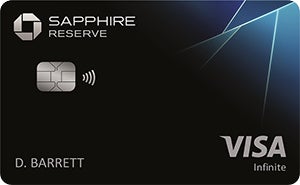
Chase Sapphire Reserve®
Earn 100,000 bonus points + $500 Chase TravelSM promo credit after you spend $5,000 on purchases in the first 3 months from account opening.
How Long Should You Wait Before Applying for Your Next Credit Card?
After applying for one of the Chase Sapphire cards, you’ll be at 1/24, meaning you can still apply for four new Chase cards.
Technically, Chase allows you to apply for a maximum of two of their cards within a rolling 30-day period. However, in most cases, it’s smarter to wait at least 90 days before submitting a new card application. This is due to two reasons.
First, given that most welcome bonuses require you to meet the minimum spend within the first three months, waiting 90 days between card applications increases your chances of earning these welcome bonuses.
Trying to meet multiple spending thresholds simultaneously is a recipe for meeting none—especially considering that our fictional beginner card user has a monthly credit card expenditure of only $1,861.
Second, the more card applications you make within a short time frame, the greater the hit will be to your credit score.
When applying for a credit card, banks assess your risk as a borrower—specifically, the likelihood of you defaulting on payments. Multiple credit card applications are often interpreted as a sign of financial distress, hurting your credit score and decreasing your likelihood of approval.
Likewise, if you’re applying for a mortgage, the hit to your credit score caused by successive credit card applications can increase your loan rate, costing you thousands of dollars and offsetting the short-term benefits of any welcome bonuses.
That being said, as you begin to accumulate more credit cards and use them responsibly, you’ll build a robust credit profile. Consequently, new card applications won’t have anywhere as significant of an impact on your score as they did in the beginning.
Nevertheless, waiting at least 90 days between card applications in the beginning is a solid strategy for protecting your credit score, increasing your chances of approval and allowing you to earn welcome bonuses with ease.
And in the case that your credit score drops below 700, extending this waiting period to six months is an even safer option.
Your Second Card: Chase Freedom
Keeping the 5/24 rule in mind, your second card should be one of the two following Chase Freedom cards:
- Chase Freedom Unlimited®
- Chase Freedom Flex®
At a glance, these two $0 annual fee cards are a simple way to earn cash back on your spending.
However, they’re actually hybrid cashback cards, meaning you can earn either cash back or Ultimate Rewards points. If you opt to earn Ultimate Rewards, then you can combine your points with those earned on your Chase Sapphire card, allowing you to redeem them at a much higher value.
For example, if you take advantage of the Freedom Flex credit card’s quarterly rotating bonus categories, you can earn an additional 30,000 Ultimate Rewards per year.
If you were to redeem these as cash back, you’d get $300 in return. However, if you transfer these to your Sapphire Reserve account and use them for travel through the Chase Ultimate Rewards portal, you could redeem these 30,000 points for a value of $450 (i.e. 1.5 cents per point).
Likewise, for an even greater return, you can transfer these points to one of Chase’s 14 airline and hotel transfer partners, which make your points go even further than the fixed redemption value in the Chase travel portal. To do this, you’ll first have to transfer your points to your Sapphire Reserve/Preferred account.
Just keep in mind that the Chase Freedom cards both charge foreign transaction fees of 3%, so make sure to use them on domestic purchases only.
Chase Freedom Unlimited®
The welcome bonus on the Chase Freedom Unlimited varies.
Here are the perks and earning rates of the Chase Freedom Unlimited credit card:
- 5% cash back on travel booked through Chase Travel℠
- 3% on dining, inclusive of eligible takeout and delivery services, as well as dining at restaurants
- 3% on drugstore purchases
- 1.5% on all other purchases
The Freedom Unlimited is a simple card for earning 1.5X Ultimate Rewards (or 1.5% cash back) on non-bonus category spending. It’s also one of the few cards to make drugstore purchases a bonus category, increasing your ability to earn points across a wider range of purchases.
As already mentioned, these extra point earnings can be transferred to your Sapphire account and redeemed for a higher value through the Ultimate Rewards travel portal or via Chase transfer partners.
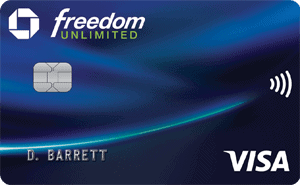
Chase Freedom Unlimited®
Earn a $200 Bonus after you spend $500 on purchases in your first 3 months from account opening.
Chase Freedom Flex®
The Chase Freedom Flex has similar welcome offers to the Freedom Unlimited.
The Chase Freedom Flex credit card comes with the following perks and earning rates:
- 5% cash back on combined purchases totaling up to $1,500 in bonus categories each quarter you activate the bonus
- 5% on travel purchased through Chase Travel℠
- 3% on dining, inclusive of takeout and eligible delivery services, as well as dining at restaurants
- 3% on drugstore purchases
- 1% on all other purchases
The Freedom Flex card’s standout feature is its rotating bonus categories, which allow you to earn up to 7,500 Ultimate Rewards per quarter. Over a year, this could allow you to earn an additional 30,000 Ultimate Rewards, which you can transfer to your Sapphire account for increased redemption value.
The Chase Freedom cards—be it the Unlimited or the Flex version—are solid travel reward credit cards.
Both cards allow you to rack up Ultimate Rewards and transfer them to your Chase Sapphire Preferred or Reserve account. From here, you can then use them for travel purchases through the Chase Ultimate Rewards portal, increasing redemption value. And because there’s no annual fee, they are easy cards to keep in your wallet in the long run, thereby increasing your credit score due to the overall higher age of your accounts.
Keep in mind that you could instead begin with the Chase Freedom cards. By doing this, you’ll be able to build a relationship with Chase, making it easier to then apply for a Sapphire card later.
Your Third, Fourth and Fifth Card: Do You Own a Business?
With a Chase Sapphire and Freedom card in your wallet, that leaves you as 2/24. This means you still have the opportunity to apply for three other Chase cards. At this point, you should consider if you’re eligible to open a business card. In most cases, you may not realize that your side gig or hobby qualifies as a business.
For example, consulting, copywriting, tutoring, handyman services, blogging, selling items online and renting out properties can all qualify as sole proprietorships.
As a sole proprietor, you can use your personal details as business details when applying for a credit card. For example, your business name, address, phone number and EIN can be substituted for your own name, address, phone number and Social Security number.
If you’re eligible for a business card, you should consider the Chase Ink collection.
While Chase applies the 5/24 rule when considering business card applications, their business cards don’t add to your 5/24 count. This means if you start off 2/24 and are accepted for two new Chase business cards, your count will remain 2/24 in the eyes of Chase, allowing you to apply for more than five Chase cards in two years.
Ink Business Preferred® Credit Card
The Ink Business Preferred Credit Card earns you Ultimate Rewards that can be transferred to Chase transfer partners or redeemed at a higher value on travel purchases.
The card comes with an annual fee of $95, which the standard welcome offer can normally more than offset. It’s also free of foreign transaction fees.
Here are the perks and earning rates of the Ink Business Preferred Credit Card:
- Points have 25% more value (1.25 cents per point) when redeemed for travel through Chase Ultimate Rewards.
- 3X points on shipping, internet, cable and phone services, travel and advertising purchases via social media sites and search engines (on up to $150,000 in combined purchases per year)
- 1X point on all other purchases, without any earning caps
- Travel and purchase coverage (trip cancellation insurance, cell phone protection, purchase protection, extended warranty protection, roadside dispatch, auto rental collision damage waiver)
- Free employee cards
The Ink Business Preferred® Credit Card typically has a welcome offer of around 80,0000 to 100,000 bonus points after spending $8,000 to $15,000 on purchases in the first three months after opening your account.
Can our fictional credit card user reach the minimum spend for this welcome bonus?
Something to consider is that business cards should be used for business purchases only. While not illegal, charging personal expenses on your business card comes with some disadvantages.
A significant advantage of owning a business card is having your business and personal expenses separated, which makes your life easier come tax season, or if you’re being audited.
In most business credit card agreements, it also states that using the card for personal expenses could result in closure of your account. Additionally, most consumer credit card protections don’t apply to business purchases, leaving you at greater risk.
For sole proprietors, reaching minimum spends can prove challenging, especially as side gigs are often low-cost in terms of barriers to entry. However, if you have some large expenses coming up, such as income taxes or new equipment purchases, that would be the perfect time to use your business card to earn the welcome bonus.
Therefore, the Ink Business Preferred Credit Card makes sense only if you can charge enough business expenses on the card within the first three months to earn the welcome offer. Otherwise, you’re better suited for the Ink Business Unlimited® Credit Card or the Ink Business Cash® Credit Card.
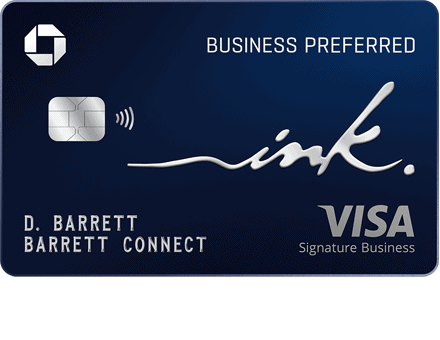
Chase Ink Business Preferred® Credit Card
90,000 bonus points after you spend $8,000 spend in 3 months.
Ink Business Unlimited® Credit Card
The Ink Business Unlimited® Credit Card typically offers $750 to $900 cash back to new cardmembers who spend $6,000 on purchases in the first three months after opening an account.
The card has a $0 annual fee but charges a foreign transaction fee of 3%.
The Ink Business Unlimited® Credit Card offers the following perks and earning rates:
- 1.5% cash back on every business purchase, without any earning caps
- Fraud protection
- Free additional employee cards
The card earns you 1.5X Ultimate Rewards or 1.5% cash back, the former of which you can combine with your Sapphire account for partner transfers and increased redemption value.

Chase Ink Business Unlimited® Credit Card
Earn $750 bonus cash back after you spend $6,000 on purchases in the first 3 months from account opening.
Ink Business Cash® Credit Card
The Ink Business Cash Credit Card has similar welcome bonuses as the Unlimited. It also charges a $0 annual fee, but a foreign transaction fee of 3% applies.
The card comes with the following earning rates and perks:
- 5% cash back on certain business purchases, such as office supply stores and internet, cable and phone services (on up to $25,000 in combined purchases per year)
- 2% on purchases at gas stations and restaurants
- 1% on all other purchases, without any earning caps
- Fraud protection
- Additional employee cards at no extra cost
Like with the other Chase cards, you can earn either cash back or Ultimate Rewards to transfer to your Sapphire account.
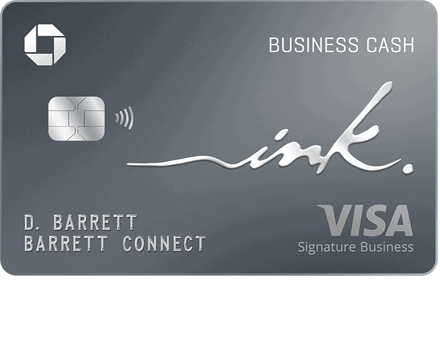
Chase Ink Business Cash® Credit Card
Earn $350 when you spend $3,000 on purchases in the first three months and an additional $400 when you spend $6,000 on purchases in the first six months after account opening
Co-Branded Chase Cards
If you can’t qualify for a business card, then it makes sense to look for co-branded Chase cards that are best suited to your spending habits and travel goals as these will give you the greatest return.
Airline and hotel co-branded cards from Chase allow you to earn points with different loyalty programs as well as gain access to a range of travel-related perks and complimentary benefits.
Chase partners with a variety of airlines to offer the following co-branded personal cards:
- Aer Lingus Visa Signature® card
- Aeroplan® Card
- British Airways Visa Signature® card
- Iberia Visa Signature® card
- Southwest Rapid Rewards® Plus Credit Card
- Southwest Rapid Rewards® Premier Credit Card
- Southwest Rapid Rewards® Priority Credit Card
- The New United ClubSM Card
- The New United GatewaySM Credit Card
- The New United QuestSM Card
- The New UnitedSM Explorer Card
The information for the Southwest Rapid Rewards Premier Credit Card has been collected independently by MileValue. The card details on this page have not been reviewed or provided by the card issuer.
All information about Aer Lingus Visa Signature® Card and Iberia Visa Signature® Card have been collected independently by milevalue.com. The card details on this page have not been reviewed or provided by the card issuer.
Chase also offers the following co-branded airline business cards:
- Southwest Rapid Rewards® Performance Business Credit Card
- Southwest Rapid Rewards® Premier Business Credit Card
- United ClubSM Business Card
- The New UnitedSM Business Card
If you’re interested in international travel, then the co-branded United cards from Chase are an excellent beginner option for earning miles and booking award flights.
United MileagePlus Credit Cards
United miles can be redeemed for award flights on all 26 Star Alliance member airlines, which is the largest airline alliance today, giving you maximum flexibility when booking international flights.
Chase Ultimate Rewards can also be transferred at a ratio of 1:1 to United miles, giving you increased possibilities for booking with miles.
Chase co-branded United cards earn United MileagePlus miles on a range of bonus spending categories. The cards have lucrative welcome bonuses, with the chance to earn thousands of United miles as well as Premier Qualifying Points, enabling you to reach Premier® status.
Benefits range from $100 statement credits toward Global Entry, TSA PreCheck or Nexus application fees, United Club membership, and statement credits toward in-flight purchases and free checked bags.
The United Gateway℠ Card is free to hold, while annual fees range between $95 to $525 for the other cards.
Southwest Rapid Rewards Credit Cards
If your travel goals revolve mainly around the U.S. and Latin America, then the co-branded Southwest cards from Chase are a good beginner choice for earning miles and booking award flights.
Southwest personal cards allow you to earn Rapid Rewards points on a wide range of bonus category spending and come with other perks, such as Early Bird Check-Ins, Upgraded Boardings, statement credits for in-flight purchases and anniversary points.
If you’re able to qualify for the Southwest Rapid Rewards® Premier Business Credit Card as well as a personal Southwest card, such as the Southwest Rapid Rewards® Premier Credit Card or the Southwest Rapid Rewards® Priority Credit Card, and earn the welcome bonuses for both, you’ll be close to earning enough Rapid Rewards points (you need 135,000 to qualify) to receive a Southwest Companion Pass.
The Southwest Companion Pass allows a companion to fly with you free of charge (excluding taxes) on revenue fares as well as award flights. It’s valid in the year you earn it plus the following calendar year. For this reason, it makes sense to get it as early in the year as possible, so you can maximize its lifespan for nearly two years.
Annual fees for Chase co-branded Southwest cards range from $69 to $199, depending on how many perks and benefits you want.
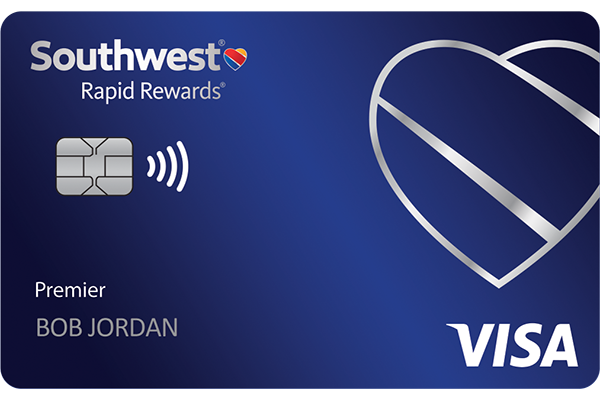
Southwest Rapid Rewards® Premier Credit Card
Earn 50,000 points after you spend $1,000 on purchases in the first 3 months from account opening.
Co-Branded Hotel Credit Cards
Aside from co-branded airline cards, Chase also offers co-branded hotel cards. As with the airline cards, choosing the best hotel card is a matter of analyzing your travel habits and goals.
Chase offers the following cards:
- IHG One Rewards Premier Business Credit Card
- IHG One Rewards Premier Credit Card
- IHG One Rewards Traveler Credit Card
- Marriott Bonvoy Bold® credit card
- Marriott Bonvoy Boundless® credit card
- Marriott Bonvoy Bountiful™ credit card
- World of Hyatt Business Credit Card
- World of Hyatt Credit Card
These cards come with the ability to earn free night awards at membership renewal and after meeting certain minimum spending thresholds. They also allow you to earn points for each hotel loyalty program on bonus category spending.
Chase Ultimate Rewards can also be transferred to Marriott Bonvoy, IHG One Rewards and World of Hyatt for award redemptions. Having said that, earning the hotel point currency directly is often the better option in terms of redemption value, compared to transferring Ultimate Rewards.
If you want greater booking flexibility, Marriott and IHG cards may be the better option, as they have a wider range of hotels across the world than Hyatt.
Cards After Chase
Before going further, let’s have a quick recap.
You’ll begin your credit card journey by applying for one of the two Chase Sapphire cards.
After waiting between one to three months—depending on the hit to your credit score and the ease of meeting the card’s welcome bonus—you can then apply for one of the two Chase Freedom cards.
You can then consider if you qualify for a business card. If so, you can apply for a Chase Ink Business card, helping you to maximize your Ultimate Rewards earnings.
At this point, with or without a business card, your card count will be 2/24. In either case, you can fill up the rest of your wallet with co-branded Chase cards, until you reach 5/24.
For international travel, a United card plus either an IHG or a Marriott card will be your best bet. For domestic and Latin America-based travel, a Southwest card plus a Hyatt card will likely serve you better.
Now that you’ve maxed out on Chase cards, it’s time to consider the next best providers, as well as their application rules.
Capital One
Capital One doesn’t apply any restrictions on the number of cards you can hold from other providers. However, you can hold a maximum of only two Capital One cards simultaneously.
Luckily, the Capital One Venture X Rewards Credit Card is sufficient in providing a wide range of perks, benefits and bonus category earning rates.
Capital One cards earn miles that can be redeemed at fixed values for purchases or transferred to a total of 18 airlines and hotels for higher value redemptions.
The Capital One Venture X Rewards Credit Card offers:
- 10X miles on hotels and rental cars booked through Capital One Travel
- 5X miles on flights and vacation rentals booked through Capital One Travel
- 2X miles on all other purchases
- A 10,000-mile anniversary bonus, starting on your first anniversary (worth at least $100 in travel)
- Up to $120 credit for Global Entry or TSA PreCheck
- Enjoy access to 1,300+ lounges worldwide, including Capital One Lounge locations and Priority Pass™ lounges, after enrollment
- No foreign transaction fees
- Cell phone protection up to $800
- $300 toward travel purchased through Capital One Travel, issued as statement credits
Capital One’s Venture X Rewards card welcome bonus alone often offsets the annual fee of $395. But if that isn’t enough, the additional benefits easily make the annual fee worth it.
American Express
Like Chase Ultimate Rewards, American Express Membership Rewards are some of the most valuable reward currency available. With this in mind, your wallet should definitely contain at least one Amex card, so you can begin collecting Membership Rewards.
Amex applies the five-card rule, which limits you to holding a maximum of five personal and/or business credit cards simultaneously. (This doesn’t include cards without a preset limit.) The issuer also applies the 2-in-90 rule, which limits card approvals to a maximum of two American Express cards per 90 days.
The Platinum Card® from American Express is one of the most generous cards in terms of rewards, coming in with an annual fee of $695 (see rates & fees). It offers:
- 5X points on flights booked directly with airlines or through American Express Travel®®, on up to $500,000 per calendar year
- 5X on prepaid hotels booked on AmexTravel.com
- 1X on all other eligible purchases
- Up to $300 Equinox statement credit (enrollment required)
- Up to $200 hotel credit on prepaid Fine Hotels + Resorts or The Hotel Collection bookings through American Express Travel®, given in statement credits
- Up to $155 Walmart+ statement credit (in monthly increments of $12.95)
- Up to $100 per year in statement credits toward Saks Fifth Avenue shopping, issued semi-annually in $50 increments (enrollment required)
- Up to $199 per year in statement credits toward a Clear Plus membership
- Up to $200 airline fee credit
- Up to $200 Uber Cash, issued in increments of $15 per month statement credits with a bonus $20 in December. To receive this benefit, you must have downloaded the latest version of the Uber App and your eligible American Express Platinum Card must be a method of payment in your Uber account. The Amex Benefit may only be used in the United States.
- Up to $240 digital entertainment credit, issued in $20 monthly statement credits for eligible purchases (enrollment required)
- Airport lounge access (Airspace Lounge, The Centurion Lounge, Delta Sky Club, Escape Lounges, Lufthansa Business and Senator Lounges, Plaza Premium, Priority Pass Select)
- Marriott Bonvoy Gold Elite and Hilton Honors Gold status (enrollment required)
- The card comes with statement credit to help with the cost of Global Entry/TSA PreCheck
While this is an excellent card in terms of value, this is one to consider in your longer-term strategy, rather than in your first year of earning points and miles.
You may be eligible for as high as 175,000 Membership Rewards® Points after you spend $8,000 in eligible purchases on your new Card in your first 6 months of Card Membership. Welcome offers vary and you may not be eligible for an offer. Apply to know if you’re approved and find out your exact welcome offer amount – all with no credit score impact. If you’re approved and choose to accept the
Card, your score may be impacted.
A Strategy That Fits All
Regardless of your situation, every beginner should start their credit card journey the same way—by answering the following questions:
- What are your travel goals?
- What do you spend your money on?
- What are your monthly expenses?
- What is your credit score?
Let’s briefly look at how the answers to these questions affect your credit card strategy.
Figure Out Your Travel Goals
Figuring out your travel goals allows you to prioritize particular credit cards over other ones.
For example, if points-funded stays at Hilton hotels are at the top of your list, then cards that earn Hilton Honors points or transferrable points, such as American Express Membership Rewards, will be your top priority.
Analyze Your Spending
After determining your travel goals, it’s important to analyze your spending habits.
Bonus spending categories vary from one credit card to the next. In other words, one credit card can reward a certain purchase category more than another one.
For example, the American Express® Gold Card (see rates & fees) can earn you 4X Membership Rewards points at U.S. supermarkets (on up to $25,000 per calendar year in purchases, then 1X after). In contrast, the U.S. Bank Altitude® Reserve Visa Infinite® Card earns 3X points on eligible travel purchases and mobile wallet spending.
In this case, if grocery shopping is one of your highest expenditures, then the Amex card is a no-brainer. But if you tend to make all payments via mobile wallet spending, then the U.S. Bank Altitude® Reserve Visa Infinite® Card could be the smarter choice.
Likewise, analyzing how much you spend monthly is key to planning your overall credit card strategy.
Meeting welcome bonuses and other minimum spending requirements is crucial in earning you thousands of points. However, the time frame for meeting these spending requirements is often only a few months.
Knowing how much you spend and when you’re likely to make bigger purchases, will help you earn these point bonuses—a significant part of your credit card strategy. And by picking a card whose bonus categories align best with your spending habits, you’ll earn more points, more easily.

Find Out Your Credit Score
After you’ve analyzed your spending habits, you need to find out what your credit score is. A service such as Experian can quickly determine your FICO credit score.
Keep in mind that the majority of travel credit cards require a credit score in the “good” range to qualify.
Checking your score before applying for a credit card reduces your chances of being denied—an outcome that can decrease your score. Similarly, by checking your credit score, you can better determine what your priorities are.
For example, if your credit score is below 700, you should focus on building it by making punctual recurring balance payments on a beginner credit card. Focusing on cards that build your credit history by reporting to major agencies is your best bet before trying to apply for lucrative travel reward cards.
Bottom Line
Overall, there’s no one-size-fits-all beginner credit card plan. However, the plan we’ve suggested here can still work as a framework for the majority of U.S.-based travelers.
Prioritize Chase cards in the beginning until you reach 5/24. These will give you maximum return in terms of earning lucrative welcome offers, earning points across a wide range of bonus category spending and in terms of redemption options.
If you can qualify for a Chase business card while you’re still under 5/24, you should definitely consider the advantages of doing so. Just remember to ensure you can charge enough business expenses on the card to redeem the welcome offer.
Chase co-branded airline and hotel cards will also allow you to make your travel more cost-effective as well as earn you points in the process.
After maximizing Chase cards, it’ll likely have been more than a year since you began earning points and miles. Earning welcome bonuses and waiting long enough between card applications takes time. At this point, your next steps should be to look at other cards, such as those offered by Capital One and American Express.
Keep in mind that this beginner plan only works if you use your credit card responsibly. That means treat it like a debit card, not like a loan, and always ensure you can pay off your balance in full and on time as well as meet minimum spending threshold offers. Failure to do this will wipe out any potential benefits.


